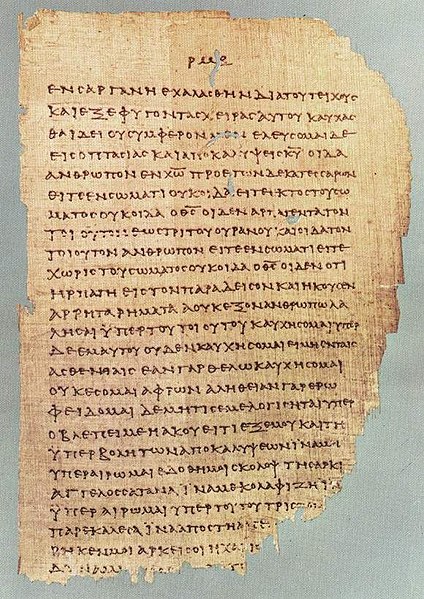Q source
The Q source (also Q document or Q) is a hypothetical written source for the Gospel of Matthew and Gospel of Luke. Q (short for the German Quelle, or "source") is defined as the "common" material found in Matthew and Luke but not in the Gospel of Mark. This ancient text supposedly contained the logia or quotations from Jesus.[1]
Along with Markan priority, Q was hypothesized by 1900, and it is one of the foundations of modern gospel scholarship.[2] B. H. Streeter formulated a widely accepted view of Q: that it was a written document (not an oral tradition) composed in Greek; that almost all of its contents appear in Matthew, in Luke, or in both; and that Luke more often preserves the original order of the text than Matthew. In the two-source hypothesis, Matthew and Luke both used Mark and Q as sources. Some scholars have postulated that Q is actually a plurality of sources, some written and some oral. Others have attempted to determine the stages in which Q was composed.[3]
The existence of Q has sometimes been challenged.[3] The existence of a highly treasured dominical document, being omitted from all the early Church catalogs and going unmentioned by all the fathers of the early Church, remains one of the great conundrums of modern Biblical scholarship.[4] However, other scholars explain this by pointing out that copying Q was unnecessary, since it was embedded in other texts that gained prominence. The editorial board of the International Q Project writes: "During the second century, when the canonizing process was taking place, scribes did not make new copies of Q, since the canonizing process involved choosing what should and what should not be used in the church service. Hence they preferred to make copies of the Gospels of Matthew and Luke, where the sayings of Jesus from Q were rephrased to avoid misunderstandings, and to fit their own situations and their understanding of what Jesus had really meant."[5] Despite challenges, the two source hypothesis retains wide support.[3]http://en.wikipedia.org/wiki/Q_source



